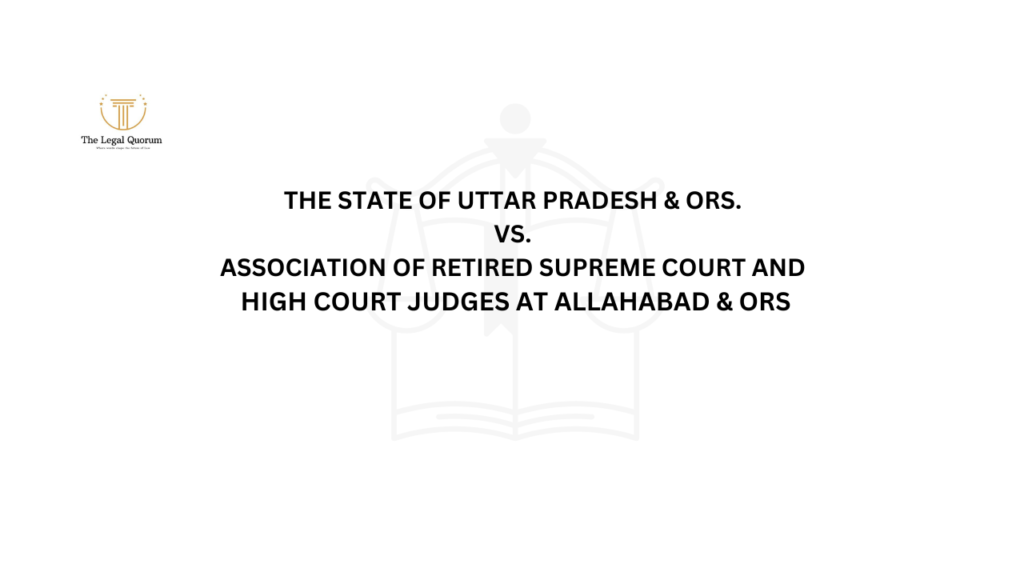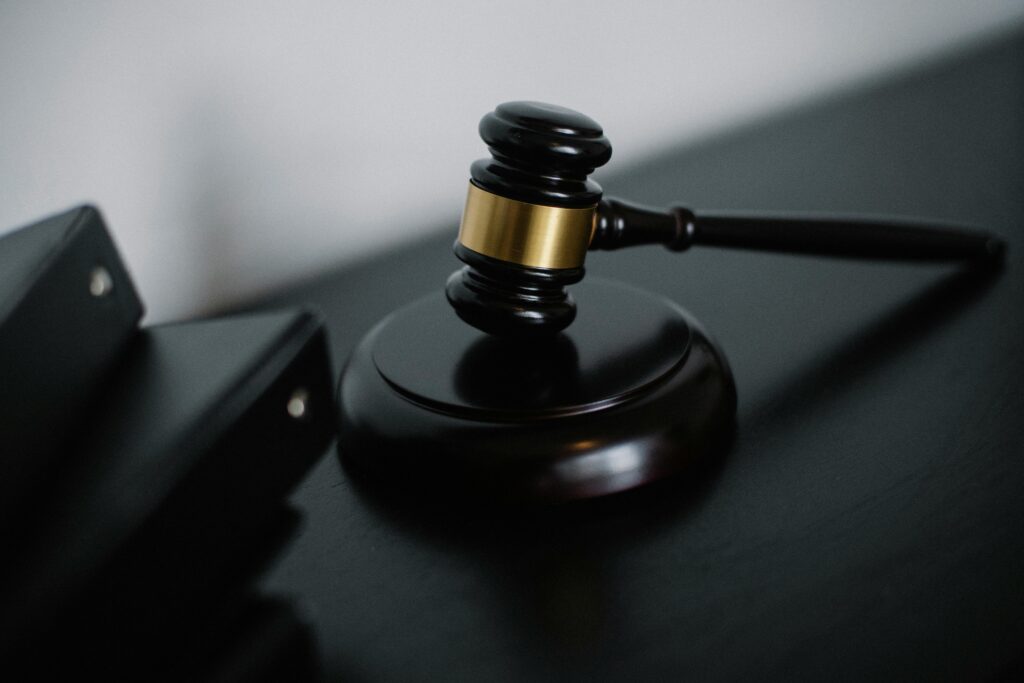Published on: 10th October 2024
Authored by: Pratham Mishra
Jindal Global Law School
Introduction
The juvenile justice system[1] is a vital aspect of a society’s legal framework, tailored to address the specific needs and circumstances of young offenders. Unlike the adult criminal justice system, which emphasizes punishment and deterrence, the juvenile justice system focuses on rehabilitation, aiming to reintegrate young offenders into society as responsible citizens[2]. However, this rehabilitative approach often conflicts with the need for accountability, especially in cases involving serious offenses. The challenge lies in striking a balance between these two objectives: ensuring that juveniles are held accountable for their actions while also providing them with opportunities for rehabilitation and growth.
In India[3], this balance is particularly delicate, given the country’s unique socio-cultural context, legal history, and evolving understanding of juvenile rights and responsibilities.
Historical Evolution of the Juvenile Justice System
The concept of a separate justice system for juveniles emerged in the late 19th and early 20th centuries, driven by the belief that children and adolescents are fundamentally different from adults in terms of cognitive development and moral responsibility[4]. The first juvenile court was established in Cook County, Illinois, in 1899[5], marking the beginning of a distinct legal framework for dealing with young offenders.
In India, the first comprehensive law addressing juvenile justice was the Juvenile Justice Act of 1986[6], which marked a significant shift in how the legal system approached juvenile offenders. This act was largely rehabilitative, focusing on care, protection, and the rehabilitation of children in conflict with the law.
However, the Juvenile Justice Act of 2000[7], which replaced the 1986 Act, was a more comprehensive legislation that sought to address the growing complexities of juvenile delinquency in India. It emphasized the need for a separate judicial process for juveniles, recognizing their potential for reform and rehabilitation.
The Shift Towards Accountability in India
Over time, however, the pendulum began to swing towards a greater emphasis on accountability. This shift was driven by a number of factors, including rising juvenile crime rates in the latter half of the 20th century and growing public concern about the ability of the juvenile justice system to adequately address serious offenses[8]. High-profile cases involving violent crimes committed by juveniles led to calls for harsher penalties and a move away from the purely rehabilitative model.
In response, many jurisdictions began to implement policies that allowed for the transfer of juveniles to adult courts, particularly in cases involving serious or violent crimes. These “waiver” or “transfer” laws reflected a growing belief that some offenses were so severe that they warranted a more punitive approach, even when committed by minors[9].
A major turning point in India’s juvenile justice system came with the 2012 Delhi gang rape case[10], which involved a juvenile offender. The brutal nature of the crime sparked widespread public outrage, leading to calls for harsher punishments for juveniles involved in serious offenses. This case highlighted the limitations of the existing juvenile justice system in dealing with heinous crimes and prompted significant legal reforms.
In response, the Indian government introduced the Juvenile Justice (Care and Protection of Children) Act, 2015[11]. One of the most significant changes under this act was the provision allowing juveniles aged 16 to 18 to be tried as adults for heinous crimes[12]. This marked a shift towards greater accountability within the juvenile justice framework, reflecting the growing public sentiment that certain crimes required a more punitive approach, even when committed by minors.
The Debate: Rehabilitation vs. Accountability
The tension between rehabilitation and accountability remains central to the juvenile justice system in India[13]. Proponents of a rehabilitative approach argue that juveniles, due to their age and developmental stage, are more likely to reform than adults. They contend that the primary focus of the juvenile justice system should be on providing opportunities for education, vocational training, and psychological support, rather than on punishment.
This perspective is supported by research in developmental psychology, which shows that adolescents are still undergoing significant cognitive and emotional development. The brain’s prefrontal cortex, responsible for decision-making and impulse control, is not fully developed until the mid-20s. Therefore, juveniles may not fully comprehend the consequences of their actions, making them more amenable to rehabilitation efforts.[14]
On the other hand, there are strong arguments for greater accountability, especially in cases involving serious or violent offenses. Advocates of this view believe that juveniles who commit heinous crimes should face consequences that reflect the severity of their actions. They argue that a purely rehabilitative approach may undermine the rule of law and fail to provide justice for victims[15].
The Indian Legal Framework: Balancing the Two Objectives
India’s legal framework reflects an ongoing struggle to balance rehabilitation and accountability. The Juvenile Justice (Care and Protection of Children) Act, 2015[16], attempts to address this by categorizing offenses committed by juveniles into three categories: petty, serious, and heinous. The act provides for different treatment of juveniles based on the nature of the offense, with a greater emphasis on accountability in cases of heinous crimes.
For petty and serious offenses, the focus remains on rehabilitation, with juveniles typically being sent to special homes where they receive education and vocational training. However, in the case of heinous crimes, the Juvenile Justice Board (JJB)[17] has the discretion to transfer the case to an adult court if the juvenile is aged between 16 and 18 and is deemed capable of understanding the nature and consequences of their actions.
This provision has been controversial, with critics arguing that it undermines the rehabilitative goals of the juvenile justice system. They contend that transferring juveniles to adult courts exposes them to the harsh realities of the adult criminal justice system, which can hinder their chances of rehabilitation and reintegration into society. On the other hand, supporters argue that it is necessary to ensure that justice is served, particularly in cases where the crime is of a particularly serious nature.
The Role of Restorative Justice in India
Restorative justice, which focuses on repairing the harm caused by criminal behavior through processes involving the offender, the victim, and the community, has gained some traction in India as a way to balance rehabilitation and accountability. This approach seeks to hold offenders accountable for their actions while also addressing the underlying issues that may have contributed to their behavior[18].
In India, restorative justice is often implemented through community-based programs and alternative dispute resolution mechanisms, such as Lok Adalats[19] and Panchayats[20]. These forums provide an opportunity for the juvenile, the victim, and the community to engage in a dialogue aimed at repairing the harm caused by the offense.
Restorative justice aligns with traditional Indian values, which emphasize reconciliation and community harmony. By focusing on the needs of both the victim and the offender, restorative justice offers a more holistic approach that can help to reduce recidivism and promote long-term rehabilitation.
Challenges in the Indian Context
While India’s juvenile justice system has made significant strides in balancing rehabilitation and accountability, it faces several challenges. One of the primary challenges is the lack of adequate infrastructure and resources to support the rehabilitative aspects of the system. Many juvenile homes and observation centers are overcrowded and understaffed, limiting their ability to provide the necessary support and interventions for young offenders.
Another challenge is the societal stigma associated with juvenile delinquency. In India, juvenile offenders often face significant social ostracism, which can hinder their reintegration into society. This stigma is exacerbated in cases where juveniles are tried as adults, as they may be branded as “criminals” for life, making it difficult for them to find employment or pursue education.
Moreover, there is a lack of awareness and training among law enforcement officials, judicial officers, and social workers about the unique needs and rights of juveniles. This can lead to inconsistencies in the application of the law and result in juveniles being subjected to harsher treatment than intended by the legal framework.
The Role of the State in India’s Juvenile Justice System
The state plays a crucial role in the functioning of India’s juvenile justice system. It is responsible for the implementation of laws, the establishment of juvenile justice boards, and the provision of rehabilitation services. However, the effectiveness of the system often depends on the political will and the allocation of resources at both the central and state levels.
In recent years, there have been efforts to strengthen the juvenile justice system through various initiatives, such as the establishment of specialized juvenile police units, the introduction of child protection policies, and the expansion of restorative justice programs. However, the success of these initiatives depends on their consistent and effective implementation across the country.
Conclusion
The juvenile justice system in India is a complex and evolving framework that seeks to balance the competing goals of rehabilitation and accountability. While significant progress has been made, particularly with the introduction of the Juvenile Justice (Care and Protection of Children) Act, 2015, challenges remain in ensuring that the system effectively addresses the needs of young offenders while also safeguarding the interests of society.
The future of juvenile justice in India will depend on continued efforts to strengthen the legal framework, improve infrastructure and resources, and promote a more nuanced understanding of juvenile delinquency that takes into account the unique developmental and social factors influencing young offenders. By finding a just equilibrium between rehabilitation and accountability, India can work towards a juvenile justice system that is both fair and effective, helping to create a safer and more just society for all.
References:
[1] Juvenile justice, Times of India Blog (Apr. 28, 2023), https://timesofindia.indiatimes.com/readersblog/lawpedia/juvenile-justice-53169/.
[2] The Juvenile Justice System | Juvenile Crime, Juvenile Justice | The National Academies Press, The National Academies Press (2001), https://nap.nationalacademies.org/read/9747/chapter/7.
[3] Samriddhi M, Juvenile Justice System in India: Evolution and Defects, CLATalogue (Aug. 23, 2023), https://lawctopus.com/clatalogue/clat-pg/juvenile-justice-system-in-india-evolution-and-defects/.
[4] Lenore R. Kupperstein & Ralph M. Susman, The Juvenile Court Process, 10 J. Offender Therapy 66, XXXX (1966), https://doi.org/10.1177/0306624×6601000302.
[5] Juvenile Justice History, Center on Juvenile & Criminal Justice | Home, https://www.cjcj.org/history-education/juvenile-justice-history (last visited Aug. 23, 2024).
[6] Juvenile Justice Act, 1986, Act 53 1986, Oct. 2, 1987, (India).
[7] Juvenile Justice (Care And Protection Children) Act, 2000, Act 56 2000, Apr. 1, 2001, (India).
[8] The Juvenile Justice System | Juvenile Crime, Juvenile Justice | The National Academies Press, The National Academies Press (2001), https://nap.nationalacademies.org/read/9747/chapter/7.
[9] The Juvenile Justice System | Juvenile Crime, Juvenile Justice | The National Academies Press, The National Academies Press (2001), https://nap.nationalacademies.org/read/9747/chapter/7.
[10] What is Nirbhaya case? | What is Nirbhaya case full story? | India News – Times of India, The Times of India (Aug. 19, 2024), https://timesofindia.indiatimes.com/india/what-is-nirbhaya-case/articleshow/72868430.cms.
[11] JUVENILE JUSTICE (CARE AND PROTECTION CHILDREN) ACT, 2015, Act 02 2016, Jan. 15, 2016, (India).
[12] JUVENILE JUSTICE (CARE AND PROTECTION CHILDREN) ACT, 2015, Act 02 2016, Jan. 15, 2016, (India).
[13] The Juvenile Justice System | Juvenile Crime, Juvenile Justice | The National Academies Press, The National Academies Press (2001), https://nap.nationalacademies.org/read/9747/chapter/7
[14] Adolescent Development – The Promise of Adolescence – NCBI Bookshelf, National Center for Biotechnology Information (2019), https://www.ncbi.nlm.nih.gov/books/NBK545476/.
[15] Gauri Pillai & Shrikrishna Upadhyay, JUVENILE MATURITY AND HEINOUS CRIMES: A RE-LOOK AT JUVENILE JUSTICE POLICY IN INDIA, Manupatra (Mar. 2017), https://docs.manupatra.in/newsline/articles/Upload/0A6F7370-9CF9-4A96-8E88-5B8195F5DD83.pdf.
[16] JUVENILE JUSTICE (CARE AND PROTECTION CHILDREN) ACT, 2015, Act 02 2016, Jan. 15, 2016, (India).
[17] JUVENILE JUSTICE (CARE AND PROTECTION CHILDREN) ACT, 2015, Act 02 2016, Jan. 15, 2016, (India).
[18] Office of Juvenile Justice and Delinquency Prevention, Restorative Justice, Working for Youth Justice and Safety | Office of Juvenile Justice and Delinquency Prevention (Nov. 2010), https://ojjdp.ojp.gov/sites/g/files/xyckuh176/files/media/document/restorative_justice.pdf.
[19] Lok Adalat, National Legal Services Authority, https://nalsa.gov.in/lok-adalat (last visited Aug. 28, 2024).
[20] What is a Panchayat, PRIA, https://www.pria.org/panchayathub/panchayat_text_view.php#:~:text=The%20word%20“Panchayat”%20means%20assembly,called%20as%20Mukhya%20or%20Sarpanch. (last visited Aug. 28, 2024).




